v2024.12.05-2232
By Moduverse Team
/
/
Introduction
Sequencing in L2 solutions is a necessary procedure that governs how transactions are ordered and processed by off-chain scaling solutions such as rollups, which helps to reduce congestion and costs. This blog looks at four projects operating in this space, focussing on their design approaches and contributions to decentralization to provide technical insights for developers, academics, and enthusiasts.
Background and Context
Sequencing in L2 solutions is sorting and batching transactions before they get transmitted to the Ethereum mainnet for finality. Rollups rely on sequencing to boost scalability (allowing for hundreds and thousands of transactions per second), lower gas rates(reducing the per transaction cost as it gets distributed over a batch), and increase transaction throughput, addressing Ethereum's limits as its user base expands.
Most rollups have a cluster of servers deployed in a data centre or on the cloud performing sequencing duties, making them centralized. This centralization entails hazards such as censorship (the ability to control which transactions get processed), single points of failure (the risk of the entire system going down if the central server fails), and the extraction of maximum extractable value (MEV), which can hurt both users and the ecosystem by allowing the sequencer to prioritize certain transactions for their benefit. These hazards underscore the need for a shift towards decentralized sequencing.
The shift towards decentralized sequencing is a promising development. Decentralization ensures that no single entity controls transaction ordering and reduces the risks of a single point of failure. This aligns with Ethereum's ethos of neutrality and security and promises a brighter future for L2 solutions. Projects like Espresso, Astria, Radius and Nodekit lead this charge, enabling decentralized and trustless sequencing that aligns with Ethereum's rollup-centric vision.
Centralized (Siloed) and Decentralized vs Shared Sequencing
Most L2 solutions' architecture currently works in silos using centralized sequencers.
Centralized sequencers perform the following operations in a rollup:
- Order transactions from users as per predefined rules (FCFS, Maximal Value, etc.).
- Execute these transactions and create a batch. In most rollups, the sequencer processes transactions according to the underlying VM (EVM, Cairo, zkVM, etc.).
- Generate fast pre-confirmation for user transactions, allowing clients and applications to proceed while waiting for Ethereum's finality (15 minutes).
- Submit transactions to the data availability (DA) layer. Rollups use Ethereum as a DA Layer, but Validiums and Optimiums do not post data to Ethereum and instead have their custom data availability solution or use altDAs like Celestia.
Decentralized sequencing distributes this job amongst different machines, preferably across geographies and/or data centres, instead of relying on one machine or a cluster.
Replacing a centralized entity with a decentralized counterpart would require a rework of the design of the sequencer specifically to include:
- Selecting a sequencer committee, i.e. a subset of nodes that elects a leader amongst them to perform the sequencing duties.
- Creating a consensus mechanism to ensure that all sequencers agree to the transaction order and a confirmation or pre-confirmation (confirmation when Ethereum is the base layer) mechanism that can rival the speed and latency of centralized sequencing.
- Creating a reward (and penalty) mechanism ensures that these decentralized sequencers remain honest and motivated to participate in the network.
Shared sequencing is a groundbreaking concept that takes decentralized sequencers to the next level by separating transaction execution from ordering. So, while decentralized sequencers work within one L2, shared sequencing works between different L2s by creating a "shared" decentralized sequencer network. This shared network does transaction ordering and bundling for all the different L2s while keeping transaction execution with the L2s.
Despite its promising potential, shared sequencing has not yet found the product market fit it once promised. The main reason for this is the reluctance of L2s to give up the MEV revenue generated by their centralized (or decentralized) sequencers. This revenue currently forms the bulk of their income and would shift to a trustless shared network of sequencers with shared sequencing.
Over time, several key projects, like Espresso, Radius, and Nodekit, have moved away from the narrative of shared sequencing, and we will examine how they have shifted away.
Project Analysis
Now that we understand the concept behind sequencing and the difference between centralized, decentralized, and shared sequencing, let's examine the four projects.
Espresso
Espresso is a global confirmation layer that promises fast transaction confirmation for L2s. It started as a shared sequencing protocol but gradually moved away from it by focusing on what they believed L2s needed, which is fast confirmations, especially for L2s using decentralized sequencing.
Since various L2s can opt into using Espresso for confirmations, they all become part of a network where these L2s can share their state and move assets, creating interoperability and composability.
Besides confirmations, Espresso also offers decentralized sequencing and data availability. L2s can choose between different configurations depending on their needs, ranging from just confirmations to the whole stack offering, including decentralized sequencing and DA.
Confirmations: Confirmations are a big part of the Espresso network. Espresso calls itself "The Global Confirmation Layer", and all L2 chains using Espresso benefit from fast pre-confirmations provided by this layer. Based on an implementation of the BFT (Byzantine Fault Tolerance) consensus protocol called HotShot, Espresso provides a shared source of truth in the form of secure confirmations for transaction ordering and data across L2 chains. The HotShot protocol offers high throughput, performance, and security guarantees.
Sequencing: The Espresso sequencer is a decentralized sequencing network for L2s that aims to deliver secure, high-throughput, low-latency transaction ordering and availability as the respective L2s still carry on execution. Espresso uses the same HotShot protocol to select the sequencer set (committee selection) to be responsible for transaction ordering based on their stake. A leader is chosen randomly from this set to eventually order transactions.
Data Availability: Espresso separates the need for data availability as part of sequencing into a separate module called the Espresso DA that focuses on security, scalability, and compatibility between the various L2s.
It has a unique three-layered model comprising of:
- VID Layer: EspressoDA avoids needing each storage node to download all block data by utilizing Verifiable Information Dispersal (VID). VID is more efficient than data availability sampling (DAS) because it reduces unnecessary redundancy. Currently, all 100 nodes form the VID Layer.
- DA Committee Layer: Similar to sequencing, the DA module randomly selects a collection of nodes called the DA Committee. Thanks to VID, this committee stores all the relevant data needed for sequencing consensus, allowing fast and efficient data recovery. Currently, a set of 21 nodes form this committee.
- CDN Layer: To allow for seamless and fast data dissemination throughout the network, Espresso DA has also created an optional CDN layer, a centralized set of servers on the AWS cloud. Although not required for the DA layer to function, the true potential of this layer will be realized when Espresso transitions over to PoS, resulting in a growth of its network size.
The current permissioned network comprises 100 nodes of existing Ethereum validators distributed across geographies, as shown by their explorer. The project's roadmap has several significant changes, which include integration with Arbitrum Nitro and an MVP showcasing interoperability between various Nitro L3 chains, integration with Optimism, and ETH restaking focused on creating a much larger, robust, secure, and decentralized node network by the end of the year. Another key upgrade is the network's upgrade to PoS, which will help move from permissioned to permissionless, enabling hundreds and thousands of nodes to become part of the network.
Astria
Astria is a decentralized, shared sequencing layer launched in alpha mainnet in October 2024 and aims to replace centralized sequencers with a permissionless network. The network comprises components that create a shared sequencing infrastructure for different L2s.
Composer: Composers are the front gates to the Astria sequencing network. They pick up user transactions from all the L2s willing to use Astria, package them, and send them to the sequencing layer in a naive way (no special ordering).
Astria Sequencing Layer: The Astria sequencer network, a decentralized network of sequencer nodes using CometBFT for consensus, implements transaction sequencing for rollups. It agrees on the ordering and inclusion of all rollup transactions.
Relayer: The relayer retrieves verified blocks from the sequencer and sends them to the DA layer and conductor. Because the sequencer's block times are much faster than the DA's, the relayer consolidates the ordered data from many sequencer blocks before compressing and delivering it to the DA.
DA Layer: Astria uses Celestia as its DA layer. The data delivered to the DA layer serves as a source of truth for determining the finality of the rollup transactions.
Conductor: The Conductor collects the sequenced data, verifies it, and generates the transactions for a specific rollup, all while being unaffected by the rollup execution node's transaction format or state transition function. It then routes the generated transactions to the rollup execution node for processing.
The conductor additionally collects soft commitments from the sequencer and firm commitments from the DA layer. The firm commitments acquired from the data availability layer are deemed final and expressly validated by the Conductor before being passed to the rollup.
The current permissioned network comprises 11 nodes, 4 managed by the core development team and 7 operated by individual partner teams, as shown by their explorer. The project does not have a publicly available roadmap.
NodeKit
NodeKit started as a project focused on building a decentralized shared sequencer L1 called SEQ as an L1 on Avalanche (using Avalanche's HyperSDK) but pivoted into creating the first superbuilder named Javelin. Javelin is a shared block-making machine where all rollups(and other chains) interconnect into one synchronous composable block-building infrastructure.
With Javelin, chains and L2s retain their sequencing duties and the MEV generation from sequencing but can also earn additional revenue from cross-chain MEV within the ecosystem.
Javelin: Created by NodeKit, Javelin is a superbuilder that helps create a shared block-building infrastructure, allowing transactions from different rollups or L2s to be bundled in one composite block for cross-chain interoperability between all these chains. Block building is auction-based, and the winner gets to create the block. Upon construction, blocks get sent to the NodeKit L1 for preconfirmations, consensus, and fee dispersal.
Interestingly, Javelin guarantees atomic execution of transactions, unlike projects like Espresso and Astria, which only provide atomic inclusion.
Javelin guarantees atomic execution by creating a top-of-block bundle for cross-chain transactions (Javelin builders bid for Top-of-block and Rest-of-block separately). These transactions are checked for validity using a Hyperlane client built into Javelin, ensuring that each cross-chain transaction gets executed in one go without failure.
NodeKit L1: The NodeKit L1 is a purpose-built L1 that acts as a shared common ledger between all chains using NodeKit. Blocks from each builder get bundled into the chain, and a special chunk, the top-of-block chunk, is added to the top. The top-of-block contains all the cross-chain transactions guaranteed by the builder. Since NodeKit L1 is a blockchain built as a L1on Avalanche, it uses the Snowman++ consensus mechanism.
Sidecar: Chains interested in utilizing the auction mechanism for transaction sequencing deploy and run a sidecar along with their validators. The sidecars act as gatekeepers, using which chains can register (at n-2 for epoch at n) and then de-register for the auction process. Once registered, the sidecar adds the chain to the "Composium" a term for a collection of registered chains. The auction happens at n-1, during which the builders bid for the rights to build a block across this ecosystem. Once the block gets built, it is sent back to the chains via their sidecars for execution.
Shared Auction: At epoch n-1, auctions for block-building privileges of epoch n commence every 12 seconds. The builder with the highest bid wins the auction and begins constructing blocks when their period starts. The auction winner and results get forwarded to NodeKit L1 to distribute fees to stakeholders and provide a shared common ledger across chains.
NodeKit is currently in devnet, so the number of validators or builders is not public information. Testnet and mainnet launch dates are also not available. In January, they announced a partnership with StarkNet to help integrate Javelin with the StarkNet ecosystem of chains, bringing interoperability between them.
Radius
Radius is yet another project that started as a shared sequencing project but, having seen the lack of interest from L2s, moved on to solving another critical problem that L2s face today: revenue fragmentation by creating a secure and trustless MEV infrastructure for different L2s.
Radius has two main products:
Secure Block Builder (SBB): Rollups or chains have always found it challenging to consume positive MEV opportunities while preventing harmful MEV (frontrunning and sandwich attacks). As part of their latest testnet, Loggia (July 2024), Radius introduced Secure Block Builder (SBB), which is essentially an encrypted mempool that hides user transactions from sequencers and can be customized for different rollups while leveraging the economic security guaranteed by restaking protocols.
At the heart of SBB lies its encrypted mempool. Built using Madara, an open-source stack for building L3s on Starknet, the project first demonstrated the use of a cryptographic technique called Practical Verifiable Delay Encryption (PVDE) and Single Key Delay Encryption (SKDE), which effectively hides the transaction details from sequencers until it commits to the ordering of these transactions.
The encrypted mempool enhances transaction privacy by protecting transactions from censorship, mitigating bad MEV, and creating trustless transaction ordering infrastructure across diverse blockchain environments. Thus, users no longer need to trust sequencers.
A central component of Loggia is Radius AVS (Actively Validated Services), built on Eigenlayer. Backed by the economic security of the AVS operators via restaked ETH, it ensures sequencing liveness and block safety guarantees.
In a nutshell, SBB offers L2s a way to create their decentralized sequencing network where AVS Operators on EigenLayer provide liveness and block security on top of an encrypted mempool that prevents bad MEV and provides censorship resistance.
Lighthouse: Along with SBB, Radius is building Lighthouse, which focuses on managing MEV auctions. Lighthouse intends to help rollups earn more revenue by connecting them with searchers (entities looking for MEV opportunities like arbitrage or liquidations) who bid to include their transactions in blocks.
Lighthouse and SBB are designed to work together. Lighthouse enables rollups to auction block space to searchers, who bid for the opportunity to include their MEV-seeking transactions in blocks. Radius's SBB facilitates this process, where user transactions are encrypted, ensuring searchers cannot see or manipulate them, thus protecting users from harmful MEVs like frontrunning and sandwich attacks.
The above table compares how MEV is treated by different mechanisms, highlighting Lighthouse's advantages.
Radius also announced its collaboration with Symbiotic and Avail, Alpha Engine, in January. Alpha Engine is an infrastructure stack for L2s that combines additional MEV from Lighthouse, additional economic security from staking using operators on Symbiotic, and high-throughput DA provided by Avail DA with interoperability via Avail Nexus.
Like Espresso, L2s can now choose from different integration options depending on their requirements.
According to the project's roadmap, Lighthouse is currently under development and should get its testnet sometime in Q2 of 2025. Radius will add further scope to Lighthouse by including L2-L1 MEV in Q2 of 2026. Also Radius will soon support Swell's OP-Stack-based L2 and Fuse network built on Polygon CDK.
Comparative Analysis
Here's a high-level comparison of the four projects, highlighting the differences and the diversity in technical approaches within each project.
As we have seen, three out of four projects, Espresso, Radius, and Nodekit, have moved away from providing shared sequencing infrastructure and focused their efforts on providing alternative solutions like fast confirmations, atomic execution-based interoperability, and additional MEV for L2s. All three projects can still provide a decentralized sequencing network for L2s, whereas Astria is the only shared sequencing protocol.
Conclusion
The need for shared sequencing was a response to creating a decentralized network of nodes for transaction ordering and bundling between different rollups. Several projects took up this challenge, but the economic viability of such a network for L2s has proven to be a significant hurdle, and many have since shifted their focus to other pressing challenges facing L2s.
Despite the shared sequencing network not finding the product market fit it deserves, these projects have demonstrated remarkable innovation. For example, Espresso's modular stack, based on their HotShot consensus and DA layer, Radius's encrypted mempool built on PVDE and SKDE, and Nodekit's first superbuilder for synchronous composability between multi-chain transactions are all impressive innovations. These innovations will likely find numerous applications within the crypto ecosystem, underscoring their value and relevance and may lead to future shared sequencing resurgence.
About Moduverse
Moduverse is pushing the frontiers of mass adoption with relatable content packed with key insights and discussions needed to take any individual from ground zero to being a crypto enthusiast.
All information here is for educational purposes and the projects/tokens mentioned are not any form of endorsement.
Related Blog
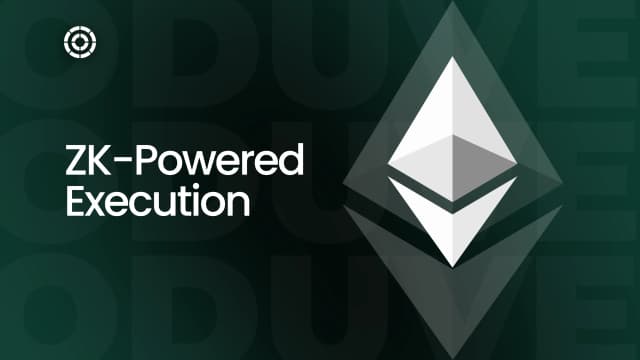
Oct 3, 2025
ZK-Powered Execution
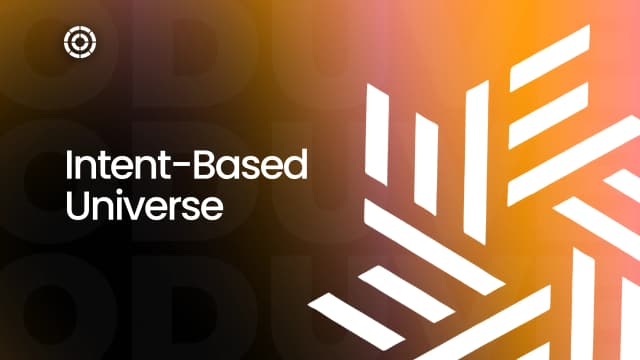
Sep 1, 2025
Intent Based Universe
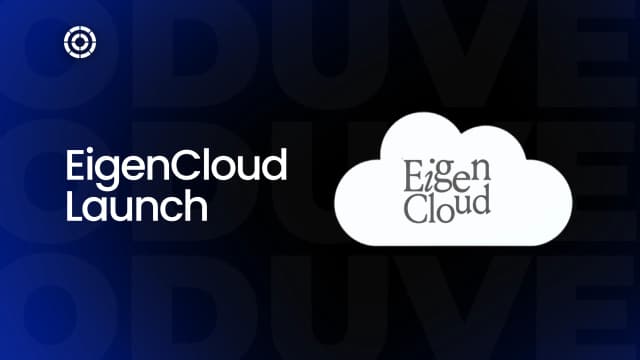
Sep 1, 2025
EigenCloud is live

Sep 1, 2025
CLOBs

Jun 6, 2025
ERC for Chain Abstraction

May 22, 2025
Proving in the modular Ecosystem
Recent Blog
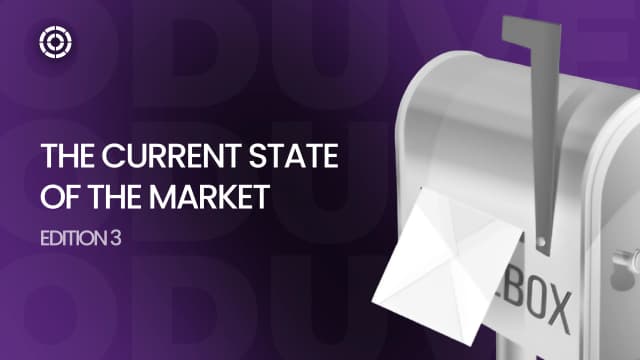
Oct 15, 2025
The Current State of the Market Edition 3
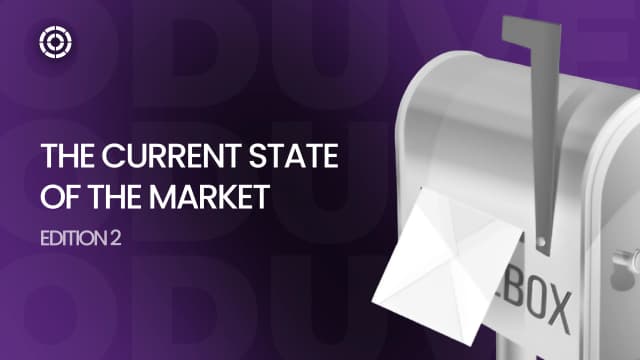
Oct 8, 2025
The Current State of the Market, Edition 2

Oct 3, 2025
ZK-Powered Execution

Sep 22, 2025
The Current State of the Market, Edition 1
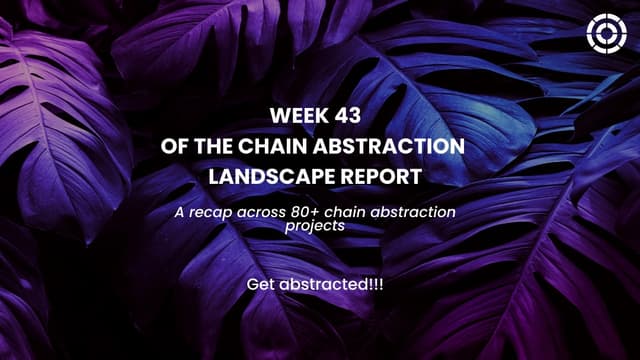
Sep 7, 2025
Sunny Abstraction Chills Edition 43

Sep 1, 2025